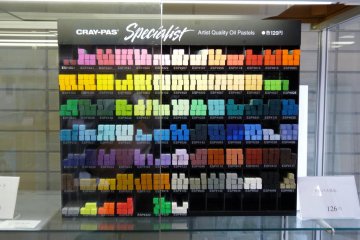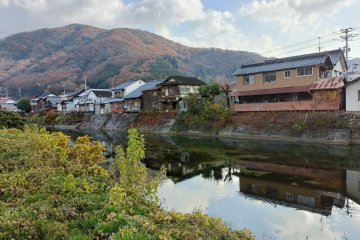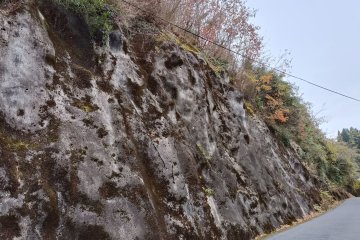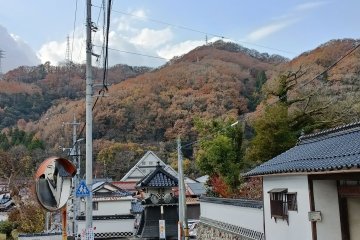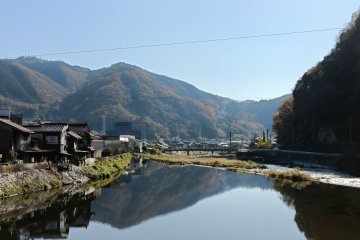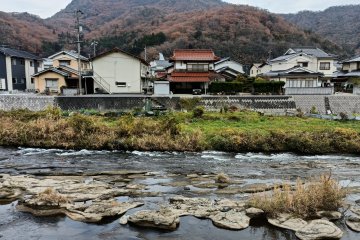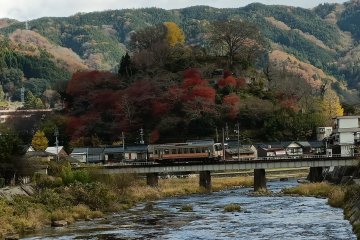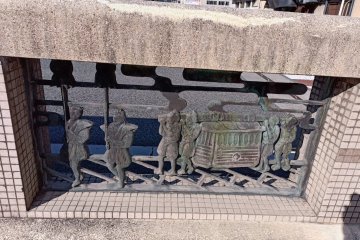It is Niimi's location laid out against the Chugoku Mountains that makes it nice to be in. Niimi, in Okayama Prefecture, occupies just about 793 square kilometres, and is 85% forested, a lot of mountain for a small space. With a river, the Takahashi, flowing through, Niimi is visually pleasing, sumptuous scenery, at your feet.

Residences and commercial outlets built right up to the foothills are low rise, but the mountain is high. They also line the river, one’s only company the gushing of the river. As Niimi expands, houses do dig into the mountain slopes. They seem to form a triangular shape, with a single house at the apex.
A suggested walking route goes to Niimi University. From JR Niimi, walk out till the first bridge. There's a sign and arrow pointing left to Niimi University. You’ll go through the town and its outskirts, so besides the scenery, you can experience a bit the uncluttered simplicity of a Japanese small town. There is a cement factory, too, one of the town’s main industries, a visual and interesting contrast to the town’s nature scenery.
You walk side by side with the mountain on the left, sometimes needing to maneuver around jutting out curved rock faces. The river is on the right, with slabs of rock formations that the erosive passing of time have made sculptures of. Bird watchers and photographers will have a hey day.

Niimi University is visible from far off as a big white block of building on a mountain side. A sign board as you walk along will direct you to turn right at a river crossing. The university is a draw in itself because of its site on three tiers of mountain. Just before you reach the first level, a turn left will get up to a tiny garden cramped with rocks and trees. Continuing up to the first level, Niimi is spread out like a carpet of mountain, river, houses and stores. One of the buildings here contains paintings evident of an artist's love for Niimi. Sculptures also dot the grounds, and inside buildings.
You can also walk around the Gotenmachi District, a loose collection of historic buildings, renovated and polished up from their origins over 300 years ago. From JR Niimi, turn right, and follow the river. You'll come to a glorious hill top, Jouyama, then it's a small steep clamber to a tree encircled park to sit and view Niimi below.

Back on ground, the road to Gotenmachi brings you to some junctions, but never fear, whichever turn you take, you'll soon see houses, buildings, with traditional white stucco plaster and black paint, with different patterns. Many of the traditional family shops on the main road that leads to Gotenmachi maintain the family's heritage since the 19th Century.

Gotenmachi is a marked out area, but houses and buildings with old style architecture can also be seen on a walk about Niimi. Many are still inhabited. Niimi’s bridges are also historic, with ironwork carvings and stone posts that tell of time passing in Niimi.
Niimi was established in 1697, as the palace of its First Lord, Haruharu Seki. The palace is said to have been the size Niimi is today. The Takashi River created Niimi's success then as an inland trade centre due its position on the river.
One more thing nice about Niimi is its sumptuous - food.

The Tourist Map listing all the eats is completely cramped with places. Niimi's residents proudly proclaim, E-toko Niimi!!! Come, see, eat, and enjoy! I did.




